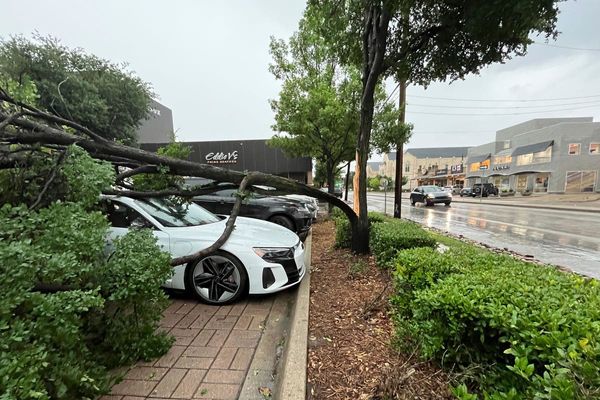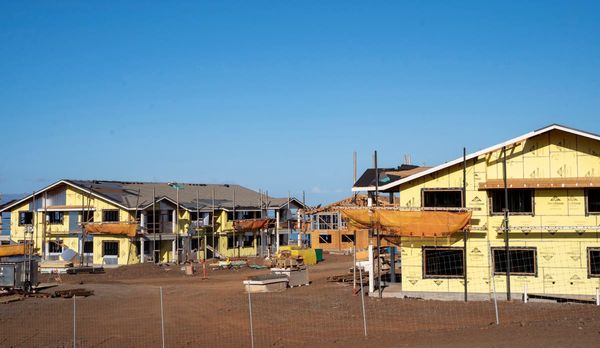Woody Allen once said that 90% of life is just showing up.
That’s not always the case for homebuyers over the past two years, who seem to be perfectly fine making offers on homes (and buying them, too) without bothering to go inside.
That’s the outlook from a new Lending Tree study, which shows 47% of Americans made a buying offer for a new home in the past two years and did so without “physically touring the home.”
Compare that to 10 years ago when only 12% of Americans did exactly the same thing. Apparently, today’s crop of homebuyers has to take drastic measures, as 24% of homebuyers paid more than the asking price for a home over the past two years, versus 5% who shared the same experience 10 years ago, according to the study.
"Buying a home sight unseen may seem like a good option if you’re in a hurry and want to make an offer as soon as possible, but it can easily backfire,” said Jacob Channel, senior analyst at Lending Tree. “If you do decide to buy a home sight unseen, be sure that it has been professionally inspected by someone you can trust, that way, at the very least, you’ll know if there’s anything structurally wrong with the home before it becomes yours.”
Buying a Home Sight Unseen -- Yay or Nay?
Make no mistake, there are upsides and downsides to getting serious about purchasing a home with no genuine eye contact and without leaving any footprints inside the home.
In the homebuyer’s defense, that’s the reality right now.
“47% of homebuyers were almost forced to place "purchase offers sight unseen" because the market availability of the desirable homes required them to place their offer fast,” said Joshua Ezell, owner at Breakthrough Handyman Services, LLC, a real estate services firm in Phoenix, Az. “They did so for over asking price and also waiving a lot of the buyer protections built into a contract such as appraisal contingencies and inspection periods.”
At one point Maricopa County, Az. only had 4,500 active homes for sale, in a market where there should be over 25,000 active homes for sale, Ezell said.
“The competitive market was so bad that many buyers would place the best offer they could, as in, the highest offer they could, waiving as many items as possible, with the quickest closing possible, and still not get the home,” he told TheStreet.
In such a competitive market, it’s worth it to understand what you’re getting into when shopping for a home without seeing it for real. Here are the issues – bad and good – in doing so.
Pros
Expediency a plus. Time is a commodity and you don’t have to waste it looking at homes on a constant basis.
“That means you don't have to take the time to visit the home and go through multiple brokers and realtors to get an appointment, saving you a good amount of time,” said Michael Clarke, a home contractor and founder of Pulled, a home management platform.
You’re at the front of the line for high-demand homes. With so many for-sale homes winding up with competitive offers, you’re eliminating the competition by viewing the home digitally.
“By buying sight unseen you can stay one step ahead of the competition who may insist on physically inspecting the property,” said Sean Woolley, founder at Cloud Nine Spain, a real estate services firm in Marbella, Spain. “This is important if the property is likely to be in high demand (i.e. it's well-priced in a good area) and/or if you are an overseas buyer that can't immediately visit the property."
If you’re local, and know the community, a remote home visit can work. "If you’re already familiar with the property or development that’s for sale, any large risk is diminished,” Wooley told TheStreet. “You can “see” a lot from good photos and videos."
Cons
You can miss vital issues that may be hidden. By avoiding a personal visit, you don't get to "picture yourself" in the home. “That can lead you to lose out on the emotional impact of being in the home and deciding if that’s where you want to live,” Clarke said.
You really need a good real estate agent standing in for you. While homebuyers can use virtual tours/video viewings as a replacement for stepping foot in the home, there are caveats.
“For this strategy to be effective, you need a good agent who you trust to point any problems,” Wooley noted. “The agent needs to have a decent camera with a wide-angle lens so you can get a true feel of the property.”
“Sometimes, the agent will already have the video from the time they listed the property, so there's often no need to even arrange a ´virtual´ viewing,” he added.
You can’t see the neighborhood. There’s something to be said for driving by the local schools your kids will attend, or getting a feel and a vibe for a local community.
By not visiting that community, that vibe is difficult to reproduce over a realtor or chamber of commerce website or video -- especially considering the large financial investment you’re about to make.
The Takeaway on Buying a Home Sight Unseen
If you’re still committed to buying a home, or at least making an offer, without visiting the property, take some extra precautions.
“Ask for an inspection report and review the details thoroughly,” Clarke advised. “Don't rush your offer and take time to ask questions. Make sure the larger infrastructure items like plumbing, H-vac, electrical, and roofing are in good condition.”
“Cosmetic details can always be improved, but infrastructure is vital from day one,” he added.
That’s especially the case when you can’t see the home firsthand.







